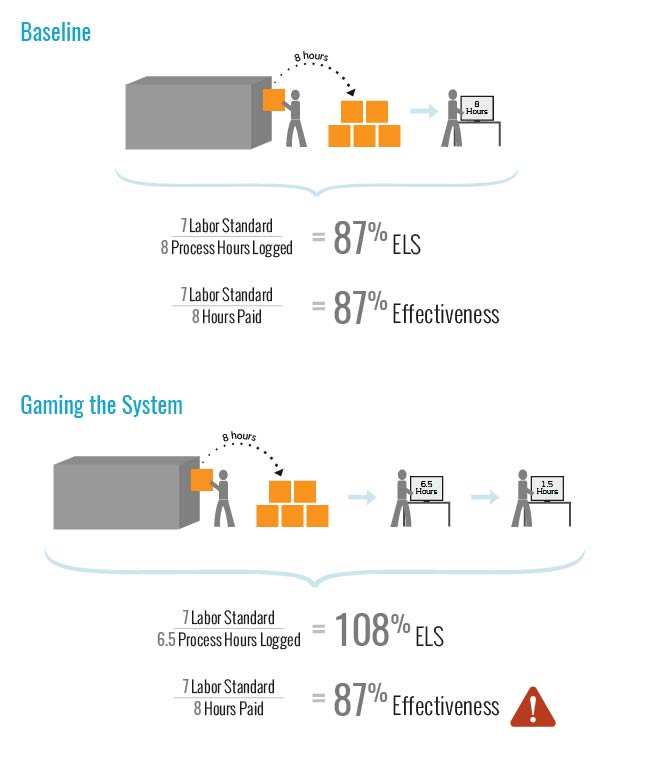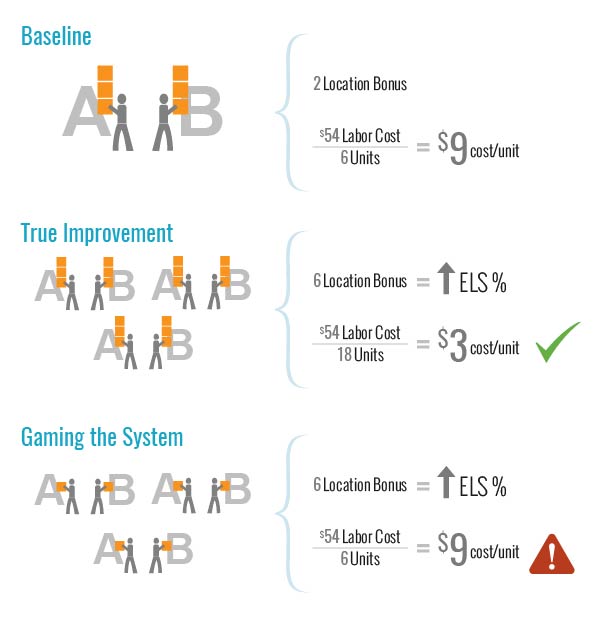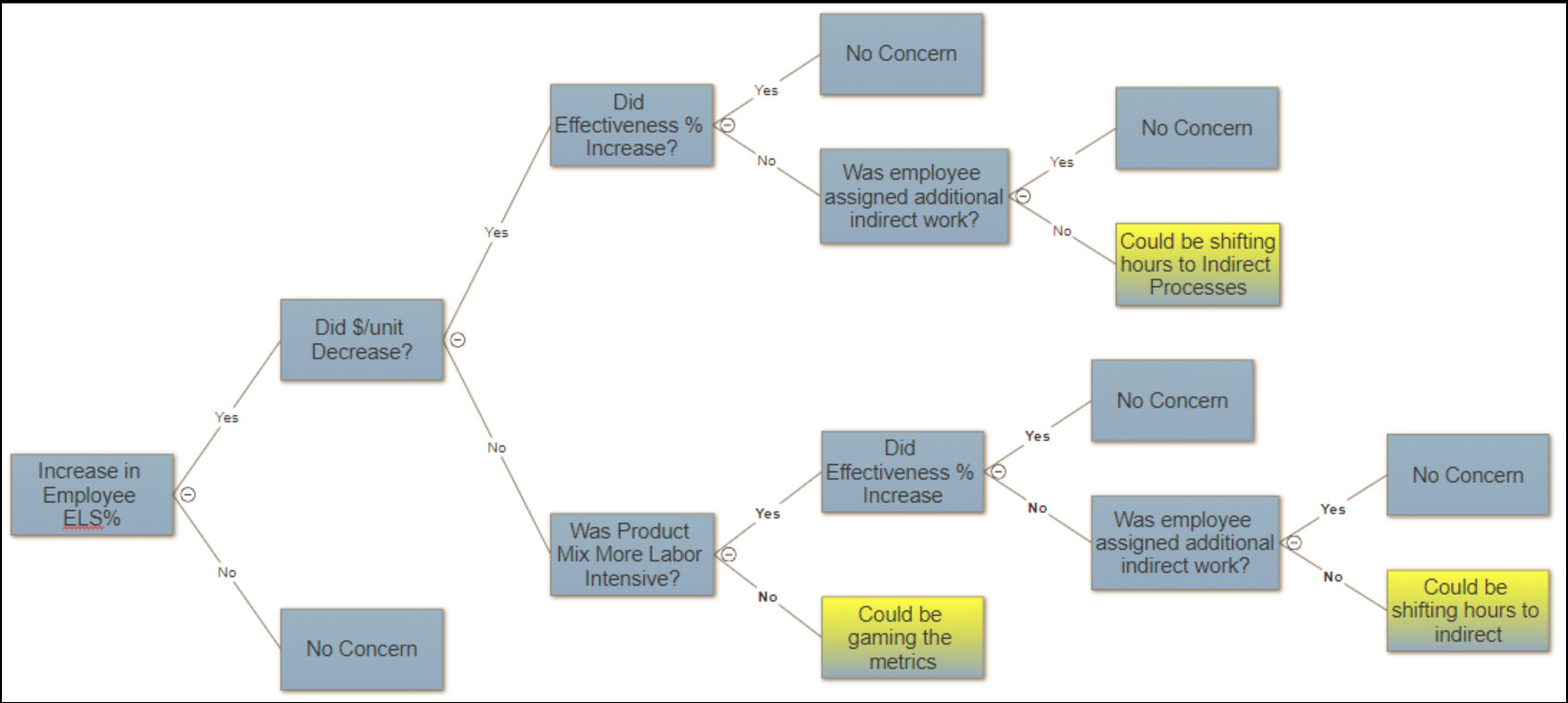Pay for Performance (PFP) can be a powerful tool to reduce the unit cost of labor in a Distribution Center while also increasing the take home pay of the workforce. Although the vast majority of employees will focus on doing their job as effectively as possible, it is important to make sure that you are well positioned to prevent any potential gaming of the system.
PFP programs are usually based on employee productivity. Easy Metrics uses ELS% to determine productivity. ELS% = Labor Standard / Time on Process. So, an employee who performs 60 minutes worth of labor standard in 50 minutes would have an ELS% = 120%. If an employee can increase their ELS score by gaming the system, they might be eligible for a larger bonus.
There are two main ways that an employee can try to increase their ELS score:
- Shift time from direct to indirect processes
- Increase some of the metrics incorporated in the labor standard
While both approaches can increase the ELS%, they do leave red flags that can help spot them. One thing to keep in mind, intentionally gaming the system, especially if PFP is in place, is a fraudulent act that should be addressed through disciplinary action when uncovered.
Luckily, there are two other key metrics tracked within Easy Metrics which can shed light on any abuse that might be taking place. These two metrics are:
- Cost-to-Serve (CTS) = Labor cost/ units produced
- Effectiveness = Labor Standard / Paid Hours
In most situations, if ELS scores are improving, our Effectiveness score should increase and our Cost/Unit should go down.
Let’s walk through a couple of examples.
Shifting Hours to Indirect Processes
The easiest way to increase ELS is by logging time into an indirect process while doing direct work. For example, if an employee unloading a container signs into Housekeeping for 30 minutes while unloading cases, his ELS score for the unloading process would be higher than justified. Let’s assume that the containers he unloaded had a labor standard of 7 hours, but it took him 8 hours to unload. Therefore, his ELS score should be 87%. But if he logged into Housekeeping 3 times during the day for 30 minutes each time, he would be showing that he completed the same amount of unloading in 6.5 hours. That would give him an ELS of 108% and a potential bonus.

This is where the Effectiveness Score comes in. If his ELS% is increasing, we would expect to see his Effectiveness score increase as well. But in both situations, he performed 7 hours of value and was paid for 8 hours, so his Effectiveness score didn’t change. This scenario would produce the following outcomes:
- ELS% will increase
- Utilization% will decrease
- Effectiveness% will stay the same
- Indirect Hours on the Daily KPI Report will be higher
Key Concept – Increased productivity should equate to a higher Effectiveness Score. If ELS increases but Effectiveness stays the same and you did not assign the employee to additional indirect jobs, then investigate further.
Boosting the Metrics
The second way to artificially increase ELS is by figuring out ways to boost the metrics. For example, if a labor standard gives credit for each new location an employee goes to, she may try to boost her score by changing the scanning pattern. If she picks 3 items from location A and then 3 items from location B, she should get credit for two locations. But if she scans A-B-A-B-A-B the system might think she went to six new locations, thereby giving her more credit. This scenario would produce the following outcomes:
- ELS% would increase
- Effectiveness would also increase
- The Cost/unit would not improve
- Key Concept – increased productivity should equate to a lower cost per unit. If an employee has a consistently high ELS% but their cost/unit doesn’t reflect that, then investigate further.

Decision Tree
The following chart is a Decision Tree that can help think through these different scenarios. Give us a call if you would like to discuss how you can use the different metrics in Easy Metrics to identify what is really going on out on the floor.






